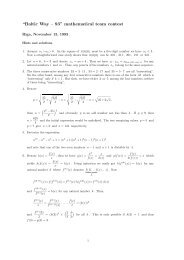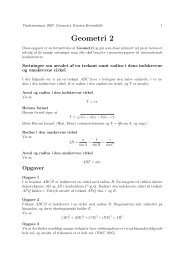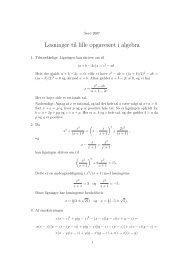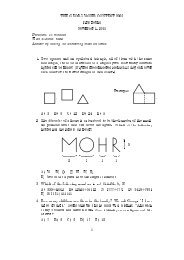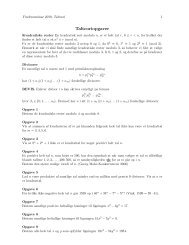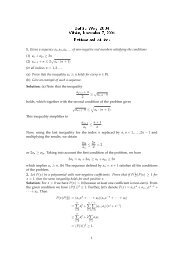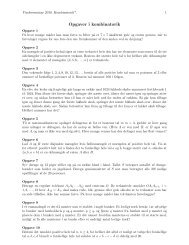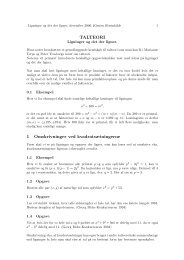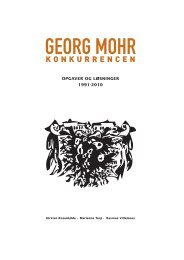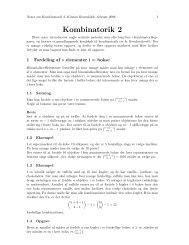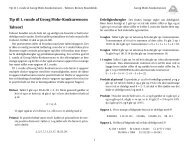Baltic Way 1999 - Georg Mohr-Konkurrencen
Baltic Way 1999 - Georg Mohr-Konkurrencen
Baltic Way 1999 - Georg Mohr-Konkurrencen
Create successful ePaper yourself
Turn your PDF publications into a flip-book with our unique Google optimized e-Paper software.
espectively (see Figure 1). In particular, the knight may get from square(k, k) to square (k + 3, k + 3) in 2 moves. Hence, by simple induction, forany n the knight can get from square (1, 1) to square (n, n) in a numbern + 1of moves equal to twice the integer part of , which is the minimal3possible number of moves.7. Answer: No, it is not possible.Consider the set S of all (non-ordered) pairs of adjacent squares. Call anelement of S treated if the king has visited both its squares. After the firstmove there is one treated pair. Each subsequent move creates a further evennumber of treated pairs. So after each move the total number of treatedpairs is odd. If the king could complete his tour then the total numberof pairs of adjacent squares (i.e. the number of elements of S ) would haveto be odd. But the number of elements of S is even as can be seen bythe following argument. Rotation by 180 degrees around the centre of theboard induces a bijection of S onto itself. This bijection leaves preciselytwo pairs fixed, namely the pairs of squares sharing only a common cornerat the middle of the board. It follows that the number of elements of S iseven.8. It is possible to find the 1000-th coin (i.e. the medium one among the <strong>1999</strong>coins). First we exclude the lightest and heaviest coin — for this we use1997 weighings, putting the medium-weighted coin aside each time. Nextwe exclude the 2-nd and 1998-th coins using 1995 weighings, etc. In totalwe need1997 + 1995 + 1993 + . . . + 3 + 1 = 999 · 999 < 1000000weighings to determine the 1000-th coin in such a way.It is not possible to determine the position by weight of any other coin,since we cannot distinguish between the k -th and (2000−k)-th coin. Toprove this, label the coins in some order as a 1 , a 2 , . . . , a <strong>1999</strong> . If a procedurefor finding the k -th coin exists then it should work as follows. First wechoose some three coins a i1 , a j1 , a k1 , find the medium-weighted one amongthem, then choose again some three coins a i2 , a j2 , a k2 (possibly using theinformation obtained from the previous weighing) etc. The results of these7




